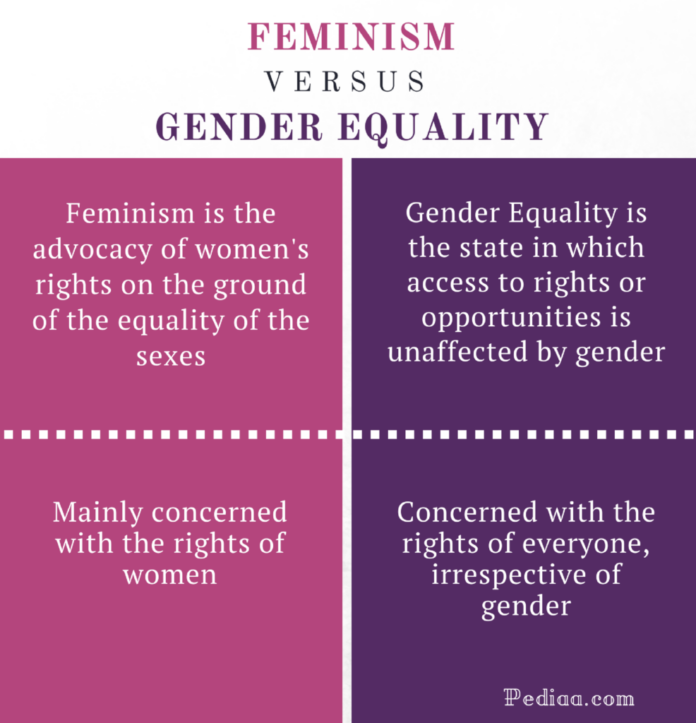The concepts of gender equity and feminism are deeply interwoven, yet they represent distinct ideologies and objectives in the quest for social justice and equal rights. Understanding these nuanced differences is paramount for activists, scholars, and advocates alike. Gender equity refers to the fairness and justice in the distribution of benefits and responsibilities between women and men. In contrast, feminism encompasses a broader political and social movement advocating for the rights of women and challenging systemic inequalities based on gender. This analysis unpacks the intricate relationship between gender equity and feminism, scrutinizing their mutual influences, tensions, and collaborative potential.
The Historical Context of Feminism
Feminism as a socio-political movement has evolved through several significant waves, each characterized by differing priorities and methods of advocacy. The first wave, emerging in the late 19th and early 20th centuries, primarily focused on legal inequalities, such as women’s suffrage and property rights. The second wave, spanning the 1960s to the 1980s, expanded the discourse to include reproductive rights, workplace equality, and sexual liberation. Following this, the third wave sought to address issues of intersectionality, acknowledging that gender intersects with race, class, sexuality, and other social categories, thus shaping women’s experiences in multifaceted ways. Each of these waves has contributed to the evolution of feminism, establishing a foundation for contemporary discussions on gender equity.
Gender Equity in Modern Discourse
Gender equity, while intrinsically linked to feminism, specifically pertains to the fairness of outcomes and opportunities in societal structures. It emphasizes the need to recognize and address the barriers that men and women face due to their gender. Advocates for gender equity argue that equity could be achieved through equal representation and resources, thereby creating a balance that acknowledges both women’s and men’s unique situations. In various sectors, from education to employment, promoting gender equity includes reforming policies to ensure that all genders have equal access to opportunities and benefits.
Despite their interdependence, it is crucial to delineate where gender equity diverges from feminism. While feminism historically focuses on elevating women’s rights and addressing systemic injustices perpetrated against them, gender equity entails creating conditions that are fair for everyone, which sometimes leads to discussions about men’s rights within the context of gender relations. Understanding this nuanced distinction allows for the fostering of inclusive dialogues that can accommodate diverse perspectives on gender issues.
The Interplay Between Gender Equity and Feminism
As society confronts the complexities of gender dynamics, it is essential to consider how gender equity intersects with feminist ideologies. Tension arises when the pursuit of gender equity is perceived to diminish the specific struggles of women. Critics argue that an exclusive focus on gender equity can inadvertently marginalize feminist objectives by framing gender as a binary issue, thereby downplaying the unique challenges faced by women as a group. These critiques invoke the need for a careful balance, ensuring that the specific experiences of women are not lost in broader discussions about gender justice.
Moreover, the collaborative potential between gender equity and feminism offers a promising avenue for activism and policy reform. Feminism has continually pushed for initiatives that foster gender equity, advocating for structural changes that benefit all genders. For instance, policies aimed at promoting parental leave, childcare support, and inclusive workplace practices can create a more equitable environment, ultimately benefiting families across the gender spectrum. Thus, while their fundamental objectives may differ — feminism emphasizing systemic change for women’s rights, and gender equity aiming for fair distribution of opportunities — their goals can align in the pursuit of a more just society.
The Intersectionality of Gender Inequities
One of the most critical contributions of contemporary feminism is its emphasis on intersectionality — a term coined by Kimberlé Crenshaw that highlights how different forms of discrimination intersect and compound the experiences of inequality. Gender inequities cannot be fully understood without considering the intersections of race, class, ethnicity, and sexual orientation. Women of color, LGBTQ+ individuals, and those from economically disadvantaged backgrounds often face a compounded matrix of oppression, which calls for a multifaceted approach to activism.
Gender equity initiatives must, therefore, be informed by intersectional feminism, recognizing that a one-size-fits-all approach to equity overlooks the unique needs of disparate groups. This intersectional framework enriches both feminist and gender equity discussions, promoting a more holistic understanding of social justice that advocates for the voices often left unheard.
Challenges in the Pursuit of Equity and Activism
Despite the inherent connection between gender equity and feminism, various challenges hinder their collaborative efforts. Misinterpretations of feminism as a movement solely for women can alienate potential allies and diminish the impact of gender equity conversations. Additionally, resistance from entrenched patriarchal systems perpetuates gender inequities, complicating attempts to integrate feminist values into broader gender equity initiatives. Activists, policymakers, and educators must engage in continuous dialogue to address these challenges.
Furthermore, the globalization of inequities calls for a reevaluation of strategies employed by both movements. Gender equity must consider the global context, where women and marginalized gender identities face vastly different challenges in various cultural and socio-political environments. Feminism’s expansion to a more global perspective is necessary to foster solidarity and meaningful support across borders.
The Future of Gender Equity and Feminist Activism
Looking ahead, the relationship between gender equity and feminism is poised for further evolution. As movements continue to gain traction, their ability to adapt to changing societal dynamics will determine their effectiveness. The embrace of collaborative strategies, emphasizing intersectionality and inclusivity, may serve as a guiding principle for feminist activism and gender equity initiatives alike.
In conclusion, understanding the interplay between gender equity and feminism enhances the conversation around social justice and equality. Rather than viewing these concepts in isolation or opposition, recognizing their interdependencies allows for a more comprehensive approach to advocacy. Both movements can thrive through a shared commitment to dismantling systemic injustices, promoting fair outcomes, and ensuring that all voices are amplified in the pursuit of a more equitable society.





























